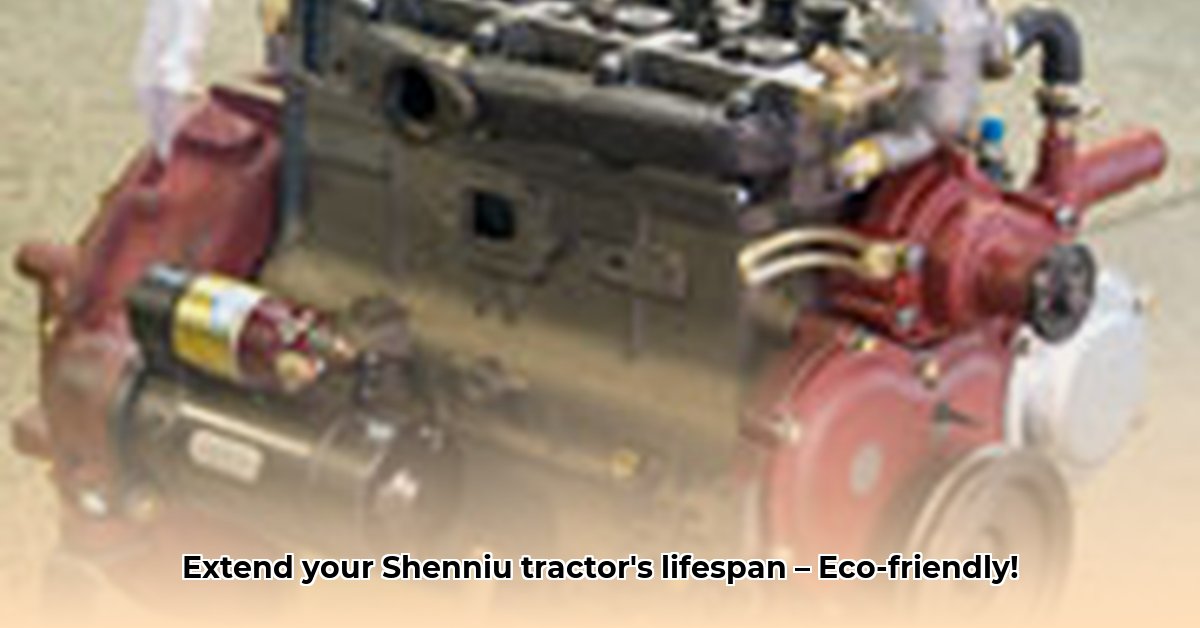
Shenniu Tractor Parts: Balancing Affordability and Sustainability
The global demand for affordable and reliable agricultural machinery, particularly tractors like the Shenniu, is undeniable. This reliance, however, presents a significant sustainability challenge: the environmental impact of the continuous production and disposal of tractor parts. This article examines the Shenniu tractor parts supply chain, highlighting the need for a multi-stakeholder approach to balance the crucial need for affordability with environmental responsibility. For information on sustainable hydraulic fluids, see this resource.
The Current State of the Shenniu Tractor Parts Supply Chain
The market for Shenniu tractor parts is characterized by high demand, particularly for cost-effective options. Many farmers, especially in developing countries, prioritize affordability, frequently choosing remanufactured parts as a financially viable alternative [1]. This preference for remanufactured components (e.g., rebuilt cylinder heads) represents a positive step towards a circular economy, minimizing waste and extending the lifespan of existing materials.
However, a significant obstacle is the considerable lack of transparency within the entire supply chain. Data regarding the sourcing of raw materials, manufacturing processes, and the expected lifespan of both new and remanufactured parts is scarce. This lack of information makes it difficult to conduct accurate lifecycle assessments and compare the overall environmental impact of new versus remanufactured components. A crucial question, therefore, remains unanswered: Is a remanufactured part definitively more sustainable than a new one? Currently, we lack the necessary data to conclusively answer this.
Sustainability Assessment: A Lifecycle Perspective
The sustainability of Shenniu tractor parts hinges on several crucial factors. The production of new parts inherently consumes significant energy and resources, potentially leading to higher greenhouse gas emissions. Remanufacturing presents a promising alternative, offering the potential for reduced emissions and waste. However, this potential is contingent upon sustainable sourcing of materials and effective quality control throughout the remanufacturing process.
Consider the entire lifecycle: from raw material extraction to manufacturing, usage, and finally, disposal. Each stage contributes to the overall environmental impact. Without comprehensive data on each stage—a significant gap in current knowledge—it's challenging to accurately assess the environmental performance of different parts. This data deficit is particularly pertinent given the widespread use of Shenniu tractors in regions where sustainable practices might be compromised due to a focus on affordability. How can we ensure that cost-effectiveness does not come at the expense of environmental stewardship?
Actionable Recommendations: A Collaborative Approach
Addressing the sustainability challenges within the Shenniu tractor parts supply chain requires a coordinated effort from all key stakeholders. The following recommendations provide a roadmap for short-term and long-term improvements:
Shenniu Tractor Owners: Prioritize preventative maintenance to extend the lifespan of existing parts and reduce the need for frequent replacements. Actively seek out suppliers who prioritize transparency regarding their environmental practices (e.g., lifecycle assessments).
Parts Suppliers: Invest in rigorous quality control for remanufactured parts and actively publish transparent lifecycle assessments for both new and remanufactured components. Long-term investments in research and development should focus on eco-friendly materials and processes, aiming for full supply chain traceability.
Governments and NGOs: Fund research into sustainable materials and manufacturing processes for tractor parts. Establish incentives for the use of remanufactured parts and introduce stricter regulations for the environmentally sound disposal of end-of-life parts. Promote the development of effective recycling infrastructure.
Conclusion: A Path Towards Sustainability
The sustainability of the Shenniu tractor parts supply chain is not merely an environmental concern; it is fundamentally linked to the future of sustainable agriculture. The critical need for affordable parts must be balanced with the urgent need to minimize environmental impact. This requires a collaborative and transparent approach involving farmers, parts suppliers, governments, and NGOs. Addressing the substantial data gaps highlighted in this article through targeted research is paramount to achieving informed decision-making and fostering a truly sustainable system. The potential for a greener future for Shenniu tractor parts and sustainable agriculture worldwide is within reach, but realizing this potential necessitates immediate and concerted action.
Sources
[1] https://www.fampartsquick.com/product-catalog/shenniu-tractor-spare-parts.html